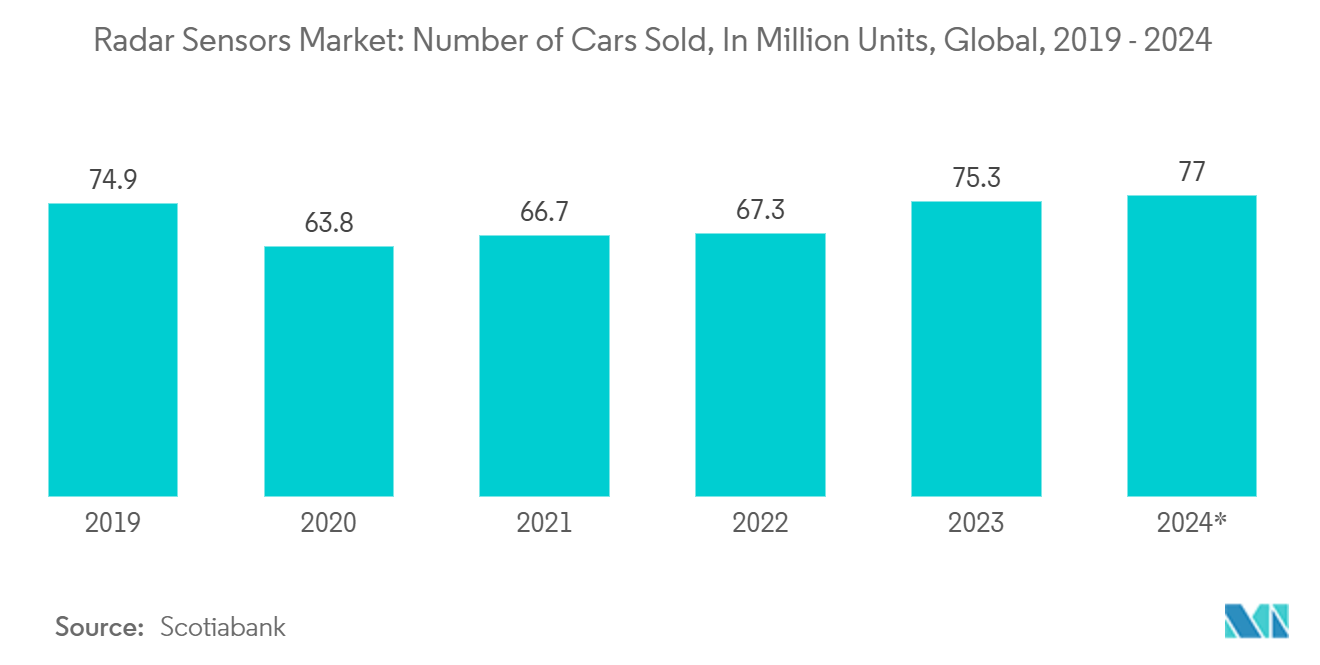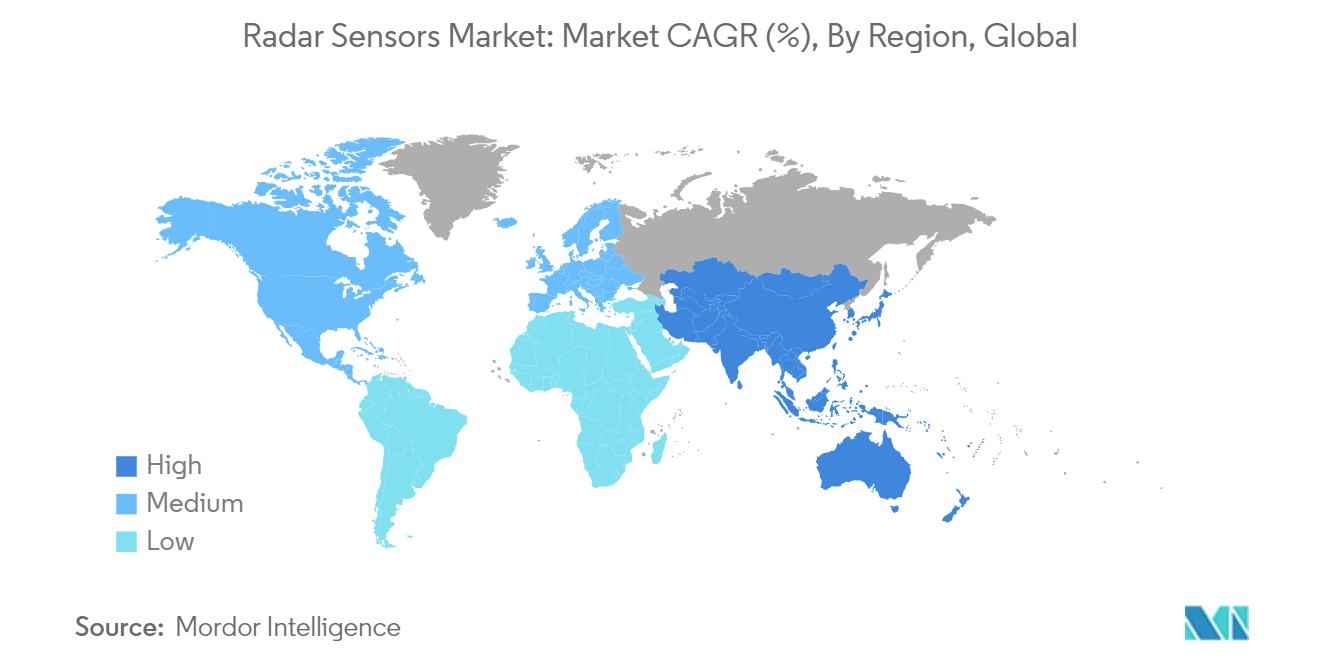Market Trends of Radar Sensors Industry
The Automotive Sector is Expected to Witness Significant Growth
- Automotive radar plays a vital role in detecting the speed and range of objects in the car's proximity. According to Scotiabank, car sales worldwide grew to around 75.3 million units in 2023, up from around 67.3 million units in 2022.
- Radar sensors play a crucial role in the autonomous driving environment. An ADAS vehicle has multiple radars covering multiple safety and comfort applications, like crash avoidance, self-parking, in-cabin monitoring, cooperative driving, and collective situational awareness.
- AI in the autonomous vehicle ecosystem also drives the market. Digital radar is used with a modern computer vision algorithm to improve AI functionality, making object detection and classification easier.
- These digital radars can deliver a high degree of automatic driving and deploy sophisticated features, such as left turn assist, blindspot monitoring, automatic emergency braking, adaptive cruise control, traffic jam pilot, or highway pilot. In order to significantly increase the efficiency of 5G millimeter-wave communications, a new type of automotive radar system is being developed based on advanced analog technology and providing 5G active and passive reflection arrays.

North America Holds a Significant Share of the Radar Sensors Market
- High-end defense applications, smartphone penetration, autonomous vehicles, and consumer electronics devices are significant growth drivers for the US radar sensors market. As the region has the highest defense budget in the world, the increase in FMCW applications, particularly short-range applications, is gaining momentum.
- New and emerging technologies, like smart grids, smart homes, intelligent transport, smart water networks, and infrastructure with radar sensor technology, are being pioneered in the region. The development of radar sensor technology is expected to open up new use cases in these areas, creating growth opportunities for suppliers.
- The demand for radar sensors is also expected to be driven by the high penetration of smartphones as more manufacturers incorporate new features into their mobile phones. GSMA estimates that almost two-thirds of North America's cellular connections will be 5G by the end of 2025, with approximately 270 million contacts.
- Given the benefits that radar sensors provide, a number of government and commercial organisations are increasing their research and development efforts to further increase the efficiency of these sensors, which is expected to positively impact the market.


